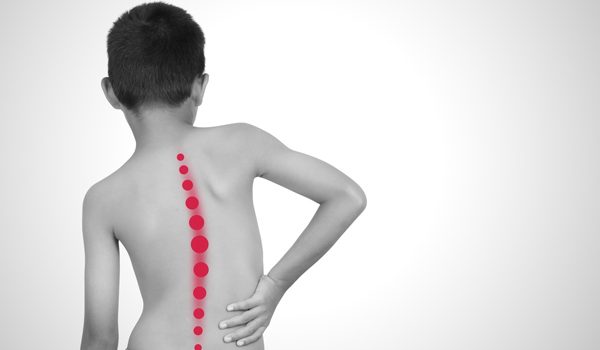What is Scoliosis?
Scoliosis is a curvature of the spine that may be S or C shaped. 80% of cases arise during the puberty growth spurt, at age 10-12. 20% arise at a younger age either infantile, under 4 years, or juvenile, age 4-10 years. Sex distribution is equal for small curves, with females having a higher percentage of larger curves.
What are the symptoms?
Often the only symptom is the appearance of the S or C curve of the spine which frequently includes leaning to one side, uneven shoulders and hips, and difficulty standing straight. It may also be associated with axial rotation of the spine.
What causes scoliosis?
There are 4 types:
- Adolescent Idiopathic scoliosis is the most common type affecting 3-5% of kids in their teen years. The cause is genetic. 30% of cases have a family history of scoliosis. This type is generally mild. 80% of cases occur between the ages of 10 – 18. However, it is also seen in infants to age 3, juveniles ages 4 – 9, and adults older than 18.
- Neuromuscular scoliosis is due to diseases of the nerves and muscles that causes trunk imbalance, and includes muscular dystrophy, cerebral palsy, Marfan’s syndrome, and multiple other conditions.
- Congenital scoliosis is caused by a manufacturing defect of the vertebra. Congenital scoliosis may only become noticeable when the child goes through a growth spurt around age 2 and between 8 – 13 years of age.
- Degenerative scoliosis is found after age 40 usually due to degenerative disc disease.
How is scoliosis diagnosed?
Dr. Shufflebarger will take a detailed medical history, ask about your child’s growth patterns, conduct a physical exam and may also include testing for muscle weakness, numbness and abnormal reflexes. He will order X-rays and may order advanced imaging studies depending upon the condition.
Any parent who suspects scoliosis should see their pediatrician who may refer to a scoliosis specialist for further testing and imaging studies.
Treatment options
Treatment options will depend on the degree of curvature, the curve pattern, the curve location and the maturity of the child. In mild cases, the child will be followed regularly to assure the curvature is not getting worse. In moderate cases, bracing may be recommended. Surgery is reserved for severe cases to correct the deformity and arrest progression.
Dr. Harry L. Shufflebarger is a board-certified pediatric orthopedic surgeon and a nationally and internationally recognized expert in the care of all pediatric spine disorders, including scoliosis. Dr. Shufflebarger was the chief of spinal surgery at the Nicklaus Children’s Hospital in Miami, Florida. In addition to his many accomplishments in research and innovation in pediatric spine conditions, he is a kind and compassionate doctor who is sought out by parents the world over.


